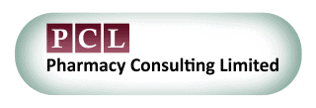WHAT?
Under the Guidelines of 5 November 2013 on Good Distribution Practice of medicinal products for human use (2013/C 343/01) a Falsified Medicine is defined as:
Any medicinal product with a false representation of:
- its identity, including its packaging and labelling, its name or its composition as regards any of the ingredients including excipients and the strength of those ingredients;
- its source, including its manufacturer, its country of manufacturing, its country of origin or its marketing authorisation holder; or
- its history, including the records and documents relating to the distribution channels used.
WHO?
As a player in the pharmaceutical sector from the Manufacturer to the logistics company, from the Wholesaler to the patient as the end user, you all have a part to play in protecting the Patient’s safety and health from Falsified Medicines.
WHY?
Patient safety is the aim of the game, if a patient suffers due to their medication being falsified, we as the supply chain for the end user has failed that patient. Think about yourself, as an end user, think about the medication you take, from a headache tablet to a general anaesthetic for a life-saving operation, how would you feel if the mediation failed? PATIENT SAFETY IS THE KEY
HOW?
At patient level you need to understand the medication you take:
- Does your medication look the same?
- Colour
- Shape
- Embossing
- Printing
- Flavour/Odour
If you suspect there is something wrong, do something about it, seek clarification.
At Pharmacy level:
- Unique Identifiers: 2D barcode, anti-tamper packaging
- Understand what the packaging looks like
- Weigh your tablet
- V. the packaging
- Understand what the tablets look like, just like the patient does it have the usual characteristics
If you suspect there is something wrong, do something about it, seek clarification.
At wholesaler level:
- All of the above apply but there is more
- Does the product have a chemical or biological taggant?
- Does the product have a micro-taggant?
- Complete Supplier BonaFides
- Who is your source?
- Have you carried out your due diligence checks
- Batch numbers/expiry dates
- Transporting within the required temperature limits of the product
If you suspect there is something wrong, do something about it, seek clarification.
At Manufacturer level:
These are your products that the counterfeiters are trying to mimic, do something about it, to protect your profit, to protect your product and ultimately protect your patient.
IS YOUR PRODUCT ROUND, WHITE AND PLAIN? TIME TO CHANGE:
What can you do:
- Taggants
- Granulation
- Compression
- Film coating
- Fluorescence
- Printing
- Bi-Layer colouring
- Holagrams
- Anti-tamper packaging
- Watermark or a U.V tag
- 2D barcode
WHEN?
ACT NOW!
By 2018 the new safety features as outlined in the Falsified Medicines Directive 2011/62/EU will be implemented in the UK market.
YOU ALL HAVE A PART TO PLAY IN PROTECTING THE PATIENT INCLUDING THE PATIENT THEMSELVES.
For more information or advice regarding Falsified Medicines or Good Distribution Practice call us now on 01252 302342 and see how we can help you protect the patient!
